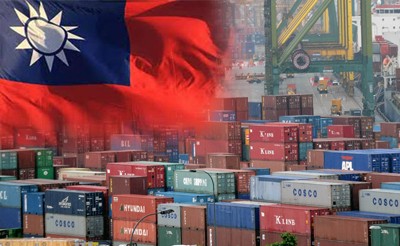natostratcon.info – Taiwan’s journey from an agrarian economy to a global industrial powerhouse is often referred to as the “Taiwan Economic Miracle.” This transformation, which took place over several decades, has positioned Taiwan as a key player in the global economy. In this article, we will explore the factors that contributed to this remarkable economic development and its impact on the island nation.
Early Beginnings: An Agrarian Foundation
In the early 20th century, Taiwan’s economy was primarily based on agriculture. The island’s fertile land and favorable climate allowed for the cultivation of rice, sugar, and tea, which were the mainstays of its economy. During this period, Taiwan’s agricultural sector played a crucial role in supporting its population and generating export revenue.
Post-War Transformation: Laying the Groundwork for Industrialization
After World War II, Taiwan faced the challenge of rebuilding its economy. The government implemented land reforms, redistributing land from landlords to tenant farmers, which increased agricultural productivity and improved rural livelihoods. This period also saw an emphasis on education and infrastructure development, creating a foundation for future industrial growth.
The Industrial Takeoff: From Light Manufacturing to High-Tech Industries
In the 1960s and 1970s, Taiwan began its shift towards industrialization. The government introduced export-oriented policies, establishing export processing zones and incentivizing foreign investment. This attracted multinational corporations and spurred the growth of light manufacturing industries, such as textiles and electronics assembly.
The 1980s marked a significant turning point as Taiwan transitioned from labor-intensive industries to high-tech sectors. The government invested heavily in research and development, fostering innovation and technological advancement. This led to the rise of industries like semiconductors, information technology, and consumer electronics, with companies like TSMC and Acer becoming global leaders.
The Role of Government Policy: Guiding Economic Growth
Taiwan’s economic miracle was not just a result of market forces but also strategic government intervention. The government played an active role in setting economic priorities, providing infrastructure, and supporting education and training. Policies such as the Ten Major Construction Projects and the Science and Technology Development Plan were instrumental in driving industrialization and innovation.
Impact on Society: Economic Growth and Social Change
The rapid economic growth transformed Taiwan’s society and standard of living. As the economy expanded, so did the middle class, leading to increased urbanization and consumerism. Taiwan’s success also brought about social changes, including improvements in healthcare, education, and overall quality of life.
Conclusion: A Blueprint for Success
Taiwan’s economic miracle is a testament to the power of strategic planning, innovation, and adaptability. From its agrarian roots to its status as a global industrial leader, Taiwan’s journey offers valuable lessons in economic development. As Taiwan continues to navigate the challenges of the modern global economy, its past successes provide a blueprint for sustaining growth and prosperity.
